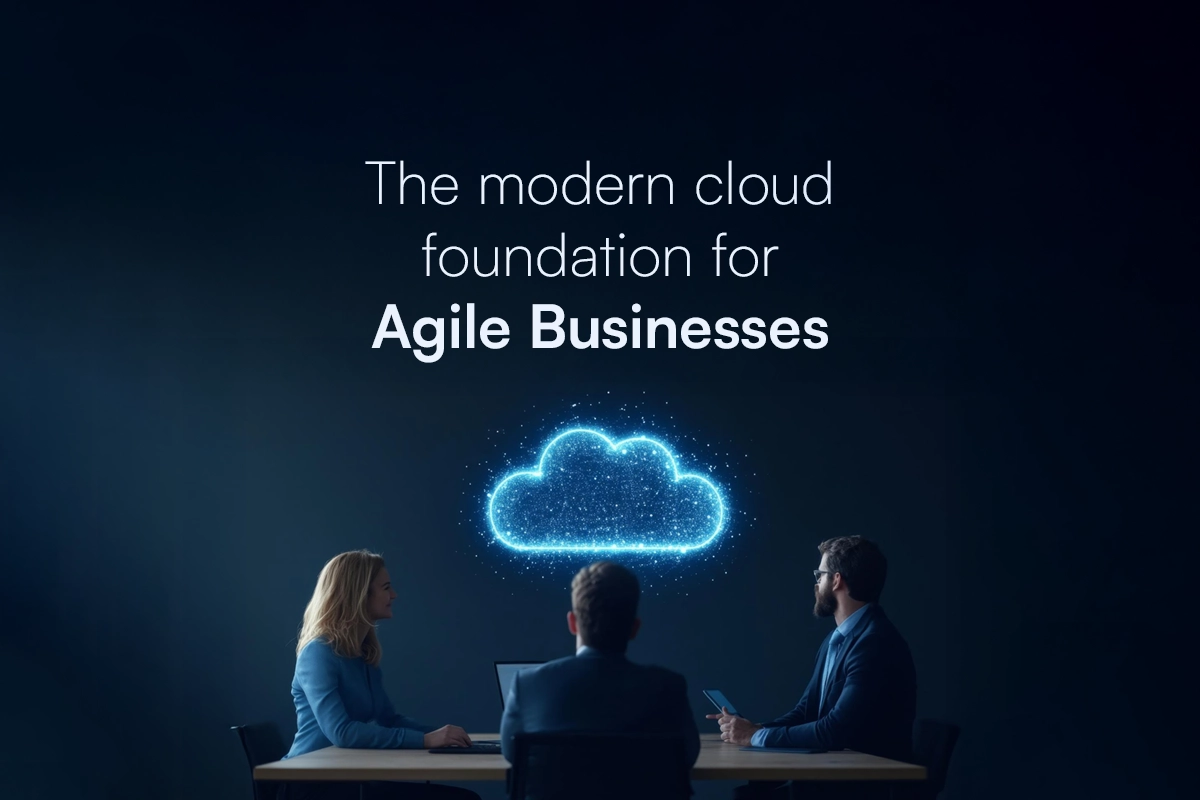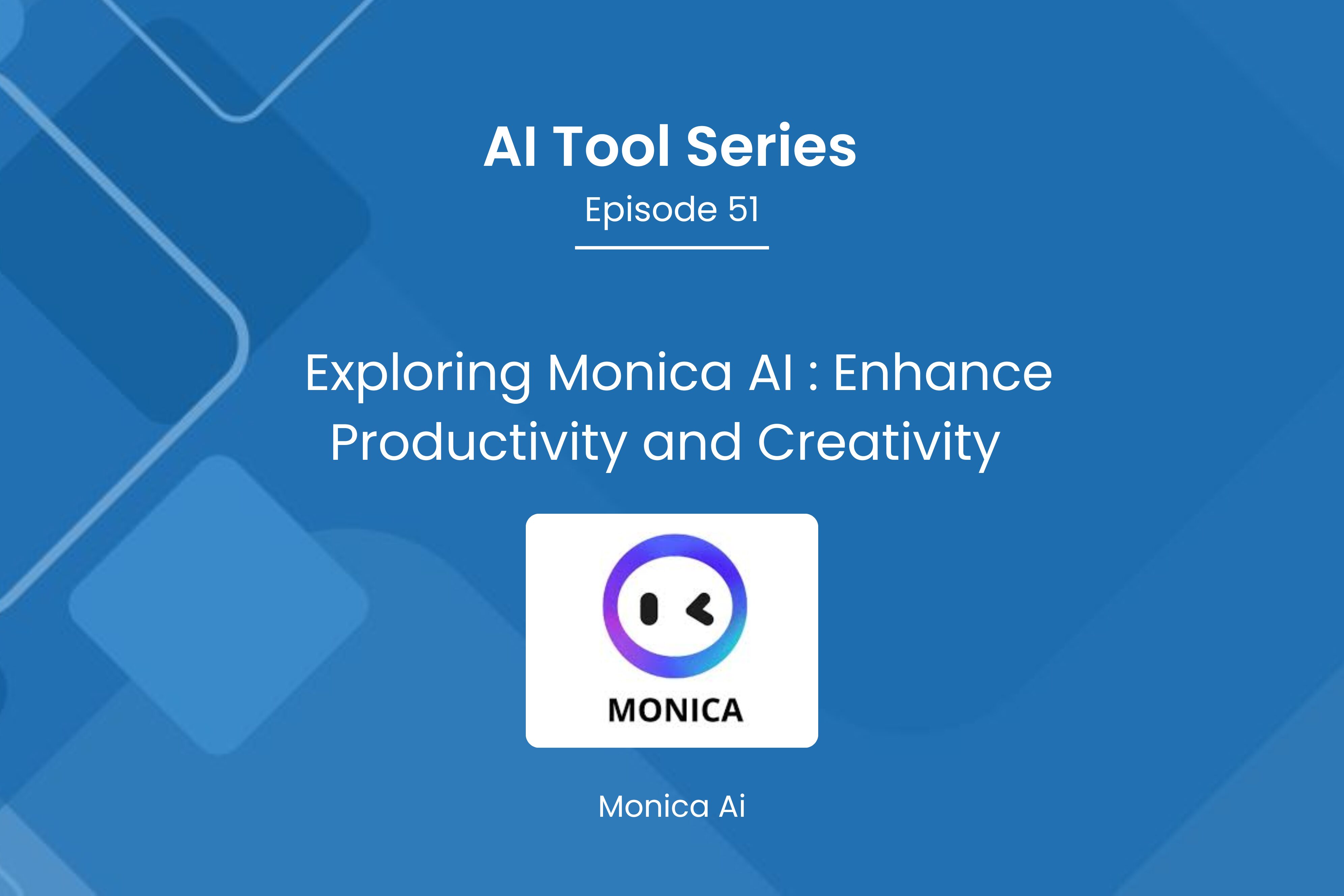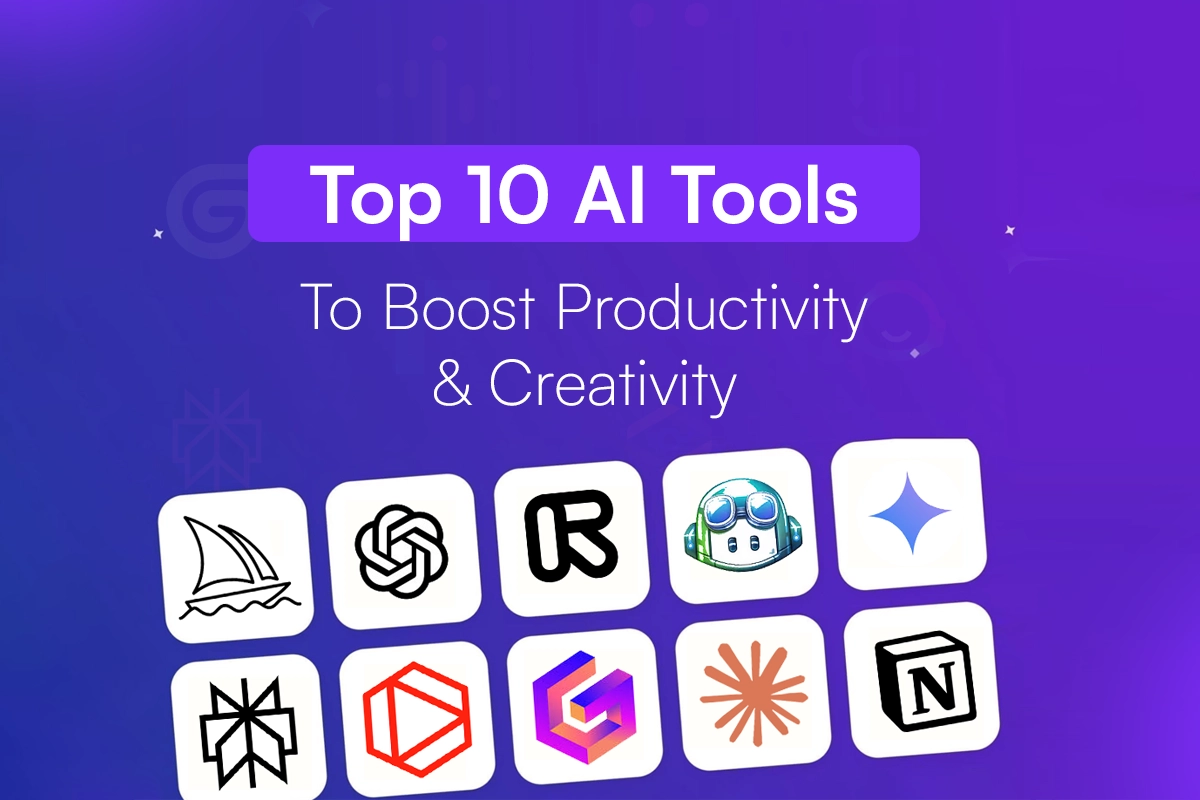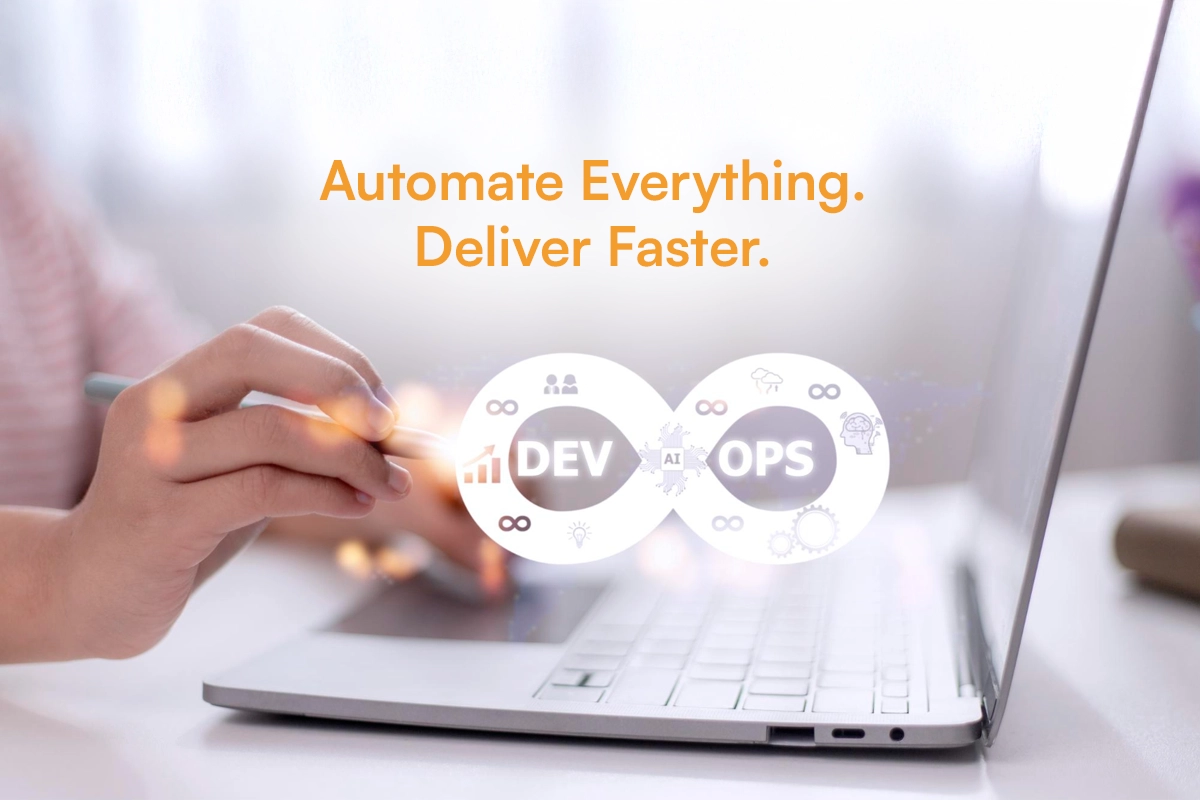How Cloud Transformation Drives Business Agility and Cost Efficiency

Introduction: The Cloud as a Catalyst for Modern Business
Businesses today face a fundamental choice: adapt their infrastructure or watch competitors pull ahead.
The signs are everywhere. Server rooms consume budgets faster than they deliver value. IT teams spend 70% of their time maintaining existing systems instead of building new capabilities. A simple software update requires weeks of planning, testing, and deployment windows that disrupt operations.
Meanwhile, market conditions change overnight. Customer expectations evolve. New competitors launch products in days, not months. Traditional IT infrastructure, built for stability and predictability, struggles to keep pace.
Cloud transformation addresses this gap. It replaces fixed infrastructure with flexible resources, manual processes with automation, and slow deployment cycles with continuous delivery. By 2026, cloud services are projected to generate over $1 trillion in revenue—a clear signal that businesses recognize the strategic value.
This isn’t about technology trends. It’s about survival and growth in markets that reward speed and punish rigidity.
Understanding Cloud Transformation
What Cloud Transformation Means (Beyond Migration)
The term “cloud transformation” gets misused. Many treat it as synonymous with migration, moving existing servers and applications from one location to another. That’s like renovating a house by moving furniture to different rooms. The structure stays the same.
True transformation rebuilds the foundation. It changes how infrastructure gets provisioned, how applications get developed and deployed, and how teams collaborate across the organization.
Core Components: Infrastructure, Applications, and Operations
Three core components drive this change.
- Infrastructure shifts from owned hardware to rented compute power. Instead of buying servers that sit idle most of the time, businesses access resources on demand. Need more capacity? It’s available in minutes. Need less? Scale down and stop paying for what you don’t use.
- Applications move from monolithic systems running on dedicated servers to distributed architectures that scale independently. A shopping cart service can scale separately from product search. When Black Friday hits, you add capacity where traffic demands it, not everywhere.
- Operations evolve from manual, ticket-based processes to automated workflows. Developers push code that automatically tests, deploys, and monitors itself. Problems trigger alerts and fixes before customers notice issues.
Role of Managed Cloud Service Providers Like Techify
This complexity explains why businesses partner with managed service providers like Techify. The technical decisions, which cloud platforms, what migration sequence, and how to optimize costs, require expertise most companies don’t maintain in-house. Techify handles these details while internal teams focus on business objectives.
With this foundation in place, we can examine the specific advantages cloud transformation delivers. Speed comes first.
Enhancing Business Agility through the Cloud
1. Faster Deployment and Scalability
Business agility means responding to market changes faster than competitors. Cloud infrastructure makes this possible in ways traditional IT cannot match.
Consider a typical scenario. Your product team identifies a market opportunity. Customers want a new feature. Under traditional infrastructure, the process looks like this: estimate resource requirements, submit hardware requests, wait for procurement approval, wait for delivery, configure servers, set up environments, and then finally start development. Timeline: weeks or months.
Cloud collapses this timeline to hours. Developers spin up environments immediately. They build, test, and deploy without waiting for infrastructure. If the feature succeeds, it scales automatically to handle demand. If it fails, the team shuts down those resources and tries something else. No sunk costs in unused hardware.
2. Real-Time Collaboration and Flexibility
This speed cascades through the organization. Marketing can launch campaigns knowing infrastructure will handle traffic spikes. Sales can promise features with realistic delivery timelines. Customer support sees issues resolved in days instead of release cycles measured in quarters.
Real-time collaboration becomes the default rather than a challenge. Teams across Mumbai, Ahmedabad, and Bangalore access the same cloud-based systems simultaneously. Data updates instantly. No one waits for file transfers or worries about working from outdated information. Decisions happen faster because everyone sees the current state.
3. Streamlined Workflows and Faster Innovation Cycles
Automation eliminates bottlenecks in routine processes. An e-commerce order triggers a chain reaction: inventory updates, warehouse systems alert pickers, shipping labels are generated, and tracking information flows to customers. Each step happens without manual intervention, reducing delays and errors.
4. Case Example: How Agile Cloud Environments Enable Faster Go-to-Market
Take a real example. An e-commerce company wants to test a new product category. Traditional infrastructure demands capacity planning: estimate traffic, buy servers, deploy software, and hope the estimates are right. Get it wrong, either direction, and there are consequences. Insufficient capacity crashes the site during launch. Excess capacity wastes budget on idle servers.
Cloud changes the math entirely. Launch with minimal resources. Monitor actual usage patterns. Scale automatically based on real demand, not guesses. If the product category fails, scale back immediately. If it succeeds, growth doesn’t require emergency hardware purchases or capacity constraints. The business takes smart risks because infrastructure adapts in real-time.
This agility creates breathing room for what businesses care about most: reducing costs while improving capabilities.
Driving Cost Efficiency with Cloud Solutions
- Pay-as-You-Go and Resource Optimization
Speed impresses executives. Cost savings convince them.
Cloud’s pay-as-you-go model fundamentally changes the economics of IT. Traditional infrastructure requires buying for peak capacity. Your systems handle Black Friday traffic levels year-round, even though most days use a fraction of that capacity. You’re paying for insurance against traffic spikes, expensive insurance that depreciates whether you use it or not.
Cloud flips this model. Pay for resources when you use them. Traffic spikes during a promotion? Capacity scales up for those hours. Quiet periods? Scale down. The monthly bill reflects actual business activity instead of theoretical maximum load.
- Reduced Hardware and Maintenance Costs
Finance teams appreciate this shift from capital expenditure to operational expenditure. No large upfront investments in depreciating assets. No refresh cycles every three to five years. No overbuying capacity to handle growth projections that may never materialize. Instead, costs scale with revenue—when business grows, you can afford the increased infrastructure spend.
Hardware and maintenance costs vanish from the budget entirely. No server rooms requiring dedicated cooling systems running 24/7. No maintenance contracts for equipment. No staff spending weekends applying security patches to physical servers. These costs don’t disappear—cloud providers absorb them and spread them across thousands of customers, achieving economies of scale no single business can match.
- Automation and Performance Monitoring for Better ROI
Automation improves ROI by preventing problems before they impact customers. Cloud monitoring detects a database query slowing down and automatically allocates more resources. Checkout processes stay fast. Customers complete purchases. No abandoned carts from poor performance. The system maintains itself.
- Long-Term Financial Benefits of Cloud Adoption
Long-term benefits compound. Capital previously allocated to infrastructure can fund product development, marketing campaigns, or talent acquisition. Businesses report reducing IT infrastructure spending by 20-30% while simultaneously improving application performance and availability. That’s not accounting magic—it’s the structural advantage of shared resources and economies of scale.
But none of these benefits matter if security is compromised. Cost savings that expose customer data or regulatory violations aren’t savings at all.
Cloud Security and Compliance: Building Trust While Scaling
- How Secure Cloud Frameworks Reduce Risks
Security concerns top the list of cloud adoption barriers. Moving critical business systems and customer data to infrastructure you don’t directly control feels risky. This perception, while understandable, misses how cloud security actually works.
Cloud providers invest more in security than individual companies can justify. They employ dedicated security teams numbering in the hundreds. They build redundant systems across geographically distributed data centers. They achieve certifications—CSA, FedRAMP, GDPR, ISO, NIST, SOC, HIPAA, PCI DSS, C5—that represent thousands of hours of auditing and validation.
These frameworks provide structured approaches to protecting data. Multi-factor authentication protects access. Encryption secures data both in transit and at rest. Network segmentation limits the blast radius if a breach occurs. Automated scanning detects vulnerabilities before attackers exploit them. Regular third-party audits verify controls are working as designed.
- Maintaining Compliance Across Industries
Compliance becomes more manageable, not less. Do healthcare organizations need HIPAA compliance? Cloud platforms provide the technical controls required. Do financial services need PCI DSS? The framework exists; you configure your applications correctly within it. The cloud provider handles infrastructure security; you handle application and data security. This shared responsibility model clarifies who does what.
- Techify’s Approach to Cloud Governance and Protection
Techify’s approach emphasizes this shared responsibility. Cloud providers secure the infrastructure layer—physical security, network security, and hypervisor security. Techify helps clients secure everything above that: application configurations, access controls, data encryption, and audit logging. Regular security assessments verify configurations remain compliant as both regulations and threats evolve.
This security foundation enables confident scaling. You can grow rapidly, knowing security controls scale with you, not lag. Which brings us to the practical question: how does transformation actually happen?
How Techify Helps Businesses Assess, Migrate, and Optimize Their Cloud Journey
Understanding benefits is easy. Achieving them is hard. This gap between theory and execution is where most cloud initiatives stumble.
Companies approach cloud transformation in predictable ways that lead to predictable problems. They migrate everything at once and overwhelm their teams. They choose platforms based on vendor marketing instead of actual requirements. They skip the assessment phase and discover incompatibilities mid-migration. They optimize nothing post-migration and watch costs spiral.
Techify’s approach starts with assessment—a thorough examination of current infrastructure, application dependencies, and business requirements. Which workloads benefit most from the cloud? Which have compliance requirements that constrain platform choices? What’s the realistic timeline given team capacity and business constraints? These questions answered upfront prevent expensive mistakes later.
Migration follows a phased approach. Start with non-critical workloads to build team experience and validate the approach. Establish patterns for networking, security, and monitoring that will scale across all workloads. Move critical systems only after the foundation proves stable. Keep business operations running throughout—no big bang cutover that risks everything.
Optimization continues after migration. This is where many companies stumble. They migrate successfully, then watch costs climb as resources run unchecked. Techify monitors usage patterns, identifies waste, and right-sizes resources continuously. That database is using a large instance, but is only consuming 30% of the CPU? Downsize it. Those development environments running 24/7, but only used during business hours? Shut them down nights and weekends. These optimizations compound month over month.
Tools, Expertise, and Support Offered by Techify Cloud Services
The tools Techify provides, automated cost tracking, security monitoring, performance optimization, and 24/7 support, matter less than the expertise behind them. Experience across industries means Techify has seen your problems before. Not similar problems. Your exact problems. They know which solutions work and which sound good but fail in practice.
Differentiators That Make Techify a Trusted Cloud Partner
This expertise separates successful transformations from expensive learning experiences. Techify’s managed services model provides enterprise capabilities without enterprise hiring. You get proven processes, validated architectures, and continuous optimization without building those capabilities in-house.
The result is a transformation that delivers promised benefits: agility to respond to market changes quickly and cost efficiency that improves margins while enhancing capabilities.
Conclusion:
Cloud transformation delivers measurable results. Deployment cycles that took weeks now take hours. Costs tied to depreciating hardware become variable expenses that scale with business activity. Applications that required maintenance windows for updates now update continuously without downtime.
These aren’t future possibilities. Companies across industries are achieving these results now. The question isn’t whether cloud transformation works—it’s whether your business can afford to wait while competitors gain these advantages.
Why Now Is the Right Time to Embrace Cloud Innovation
Timing matters. The longer you wait, the further ahead competitors pull. They’re launching features faster, serving customers better, and operating at lower costs. The gap widens with each quarter of delay.
Partner with Techify to Accelerate Your Cloud Transformation Journey
Techify accelerates this journey. We assess your current environment honestly, identifying both opportunities and constraints. We plan migrations that minimize business disruption while maximizing early wins that build organizational confidence. We optimize continuously, ensuring you’re not just in the cloud but using it effectively.
Whether you run e-commerce platforms, SaaS applications, or enterprise systems, cloud transformation is no longer optional. It’s table stakes for competing effectively.
The cloud isn’t coming. It’s here. The only question is how quickly your business can harness it to drive agility and cost efficiency that translate directly to competitive advantage.
Partner with Techify. Let’s build your future-ready business together.





